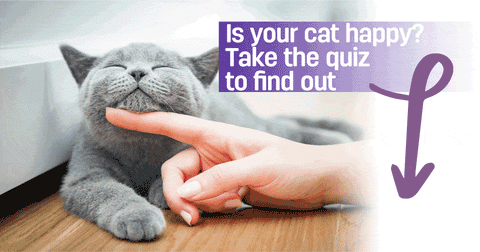
Where Do Cats Come From?
What is the origin of Cats?
Our cats have a large family tree! They are part of the Felidae family, which includes:
- Panthera – cats that roar (lions, tigers, jaguars)
- Acinonyx – cheetahs
- Felis - small cats, including our domestic cats
But have you ever wondered where your gorgeous ball of fur originated from? How did they evolve from their panther-like ancestors, millions of years ago, to the modern domestic cats that we know today?
Let’s take a look at some cat family history!
The three oldest wild cat lineages
The last common ancestor of modern cats was a species called Pseudaelurus that occurred in Asia between 9 and 20 million years ago. Using genetics, scientists have established that modern cats diverged from this ancient species into eight groups or lineages of closely related species.
10.8 million years ago
9.4 million years ago – Bay Cat Lineage – South East Asia
8.5 million years ago – Caracal Lineage – Africa
8.0 million years ago – Ocelot Lineage – North America > South America
7.2 million years ago - Lynx Lineage - North America > Eurasia
6.7 million years ago - Puma Lineage - North America > South America > Asia
6.2 million years ago - Leopard Cat Lineage - North America > Asia
3.4 million years ago - Felis Lineage - North America > Asia > Europe

Ancient and modern cat similarities
The domestic cat was classified as Felis catus in 1758, but recent studies suggest that the domestic cat should really be considered as a sub-species of the African Wildcat (Felis silvestris lybica), and thus Felis sylvestris catus. In 2017, the IUCN Cat Classification Taskforce ruled that the domestic cat was regarded as a distinct species and confirmed it’s status as Felis catus.
African Wildcats are still around today of course! They are viewed as the nearest living representative of the first cats that become our domestic kitties. The two species are different - although you will be able to recognise some similarities between your modern day domestic cat and their ancestors. Just like their ancestors, our domestic cats:
- Have super efficient senses – excellent hearing, sight and smell.
- Are predatory hunters. This is why your beautiful furball loves to bring you gifts, and particularly enjoys playing games that have a dangling toy on the end of a fishing rod.
- Are territorial – in the wild, their territory would have been on the savannah. In a domestic situation, their territory would be smaller, normally within an acre or so from your home if allowed outside.
- Mark their territory by using scent, pheromones and some visual marks.
- Have pads on their feet which protect their toes and reduce sound as they stalk their prey.
- Are carnivores and require meat in their diet to get all the nutrients they need.
In addition:
- Males and females look very similar (this is not true for their distant relative, lions, where the male has a large mane).
- Genetic analysis shows that the African Wildcat is almost identical to that of our domestic cats.
- Ancient cats spent a lot of the day resting, much like their modern descendants. It’s normal for your cats to rest for 16-20 hours a day, ideally somewhere elevated, where they can watch over their territory.
- Both domestic and ancient cats always preferred to eat and drink in areas away from where they use the toilet, so as not to contaminate their food and water.
- Domestic cats often prefer a fine sandy substrate in their litter box. The African Wildcat used the sand in the savannah to bury their poop and hide it from predators.
12 Interesting facts about the history of cat and human interaction
- Recent evidence shows that domestication probably occurred several thousand years ago in the Middle East, and that cats have lived near humans since early human settlements.
- A rise in the population of rodents around the grain stores in early settlements is thought to have attracted wild cats to get closer to humans.
- This situation helped in the subsequent taming of cats. Ancient humans also appreciated the cats’ help in controlling rodent populations.
- Ancient Egyptians kept cats in their homes to help keep them safe from rodents, snakes and scorpions.
- In 2,890 BC Egypt, Bastet was worshipped as the goddess of love, cats and war. She had the head of a cat, and much-loved cats were mummified and entombed with their families.
- There is a grave in Cyprus where a cat was buried with its human 9,500 years ago.
- Li Shou is the cat goddess in Chinese mythology. Cats have long been a part of Chinese Culture with the Chinese Lucky Cat symbolising good fortune.
- Vikings worshipped Freyja, the fertility goddess, who rode a chariot pulled by 2 cats, Bygul and Trjegul (who were a gift from Thor).
- Ancient Romans viewed cats as a symbol of liberty.
- It is thought that cats were seen as being affiliated with witches and the devil in the Middle Ages – this created a period where cats were less popular.
- As a result, there were not as many cats around in the Middle Ages to kill off the rats that carried the Bubonic Plague. This is one theory as to why the plague spread.
- When it comes to sailing, historically humans took cats with them on ships to control any rodents on board. It is thought this may be how cats were introduced to different continents.
The modern day
General opinions about cats began to improve in the 15th century after their Middle Age unpopularity. Now, in the US alone, it is estimated that 46.5 million households have adopted a cat and in 2022 there were 5.3 million pet cats in Australia. Many cats have their own social media profiles and there are also many movies that feature our beloved cats.
Since domestication, cats have not undergone any major evolutionary changes. They often still love to be independent, and perhaps this is why they can sometimes find living in our fast-changing modern homes challenging.
You can help your feline friend feel more calm and serene in the modern home by using FELIWAY. This will not only help them feel more calm and serene, it will help prevent scratching, urine spraying, tension and help them adapt to any changes around the home. For cats living with a feline pal FELIWAY FRIENDS can help them get along.























